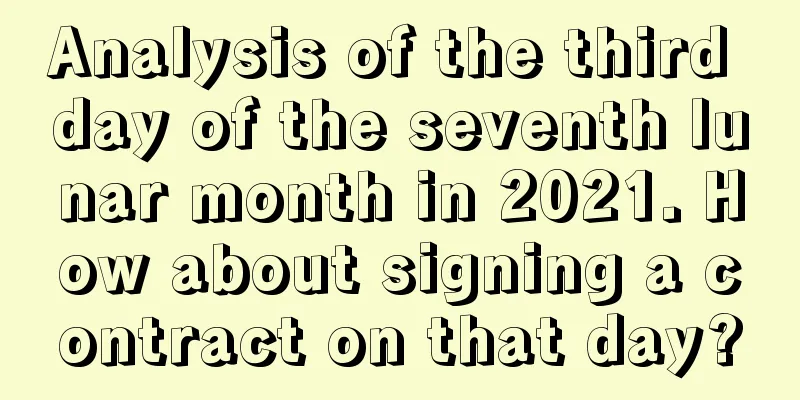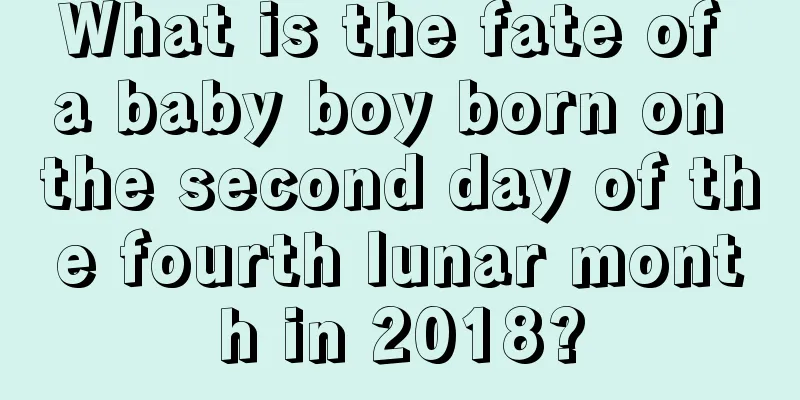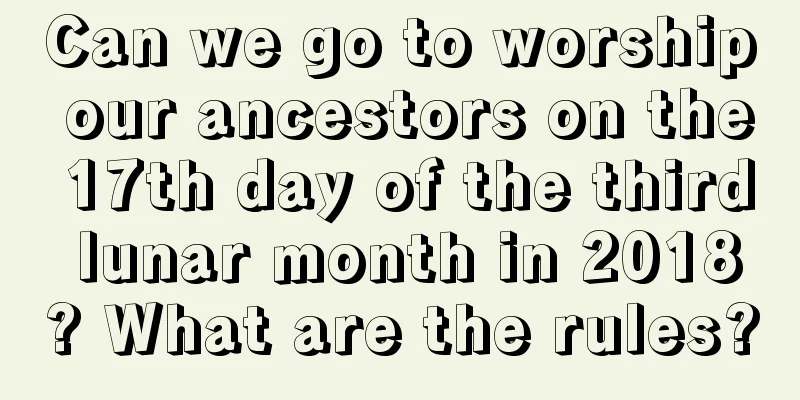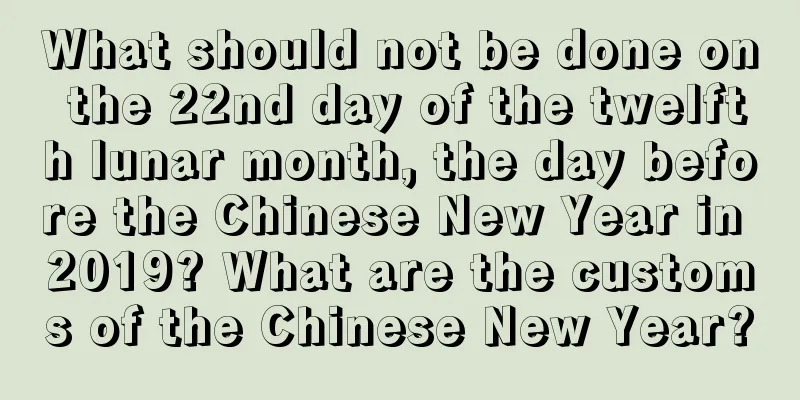How is the Spring Festival 2019? What are the customs of the Spring Festival?
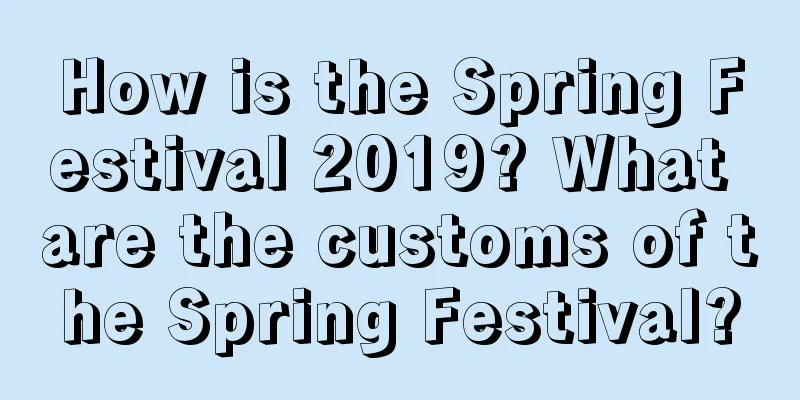
As the year draws to a close, we are about to usher in the traditional festival of the Spring Festival. So, how is the Spring Festival in 2019? What are the customs of the Spring Festival? There is no end to the topics about the Spring Festival, so do you want to know more about it? Just go to Shuimoxiansheng.com and continue wandering in the ocean of the 2019 Spring Festival!How is the Spring Festival 2019?Lunar calendar year 2019, first day of the first monthFebruary 5, 2019, Tuesday, Aquarius (Gregorian calendar) 【Today’s lunar calendar is suitable】 Repairing graves, fasting and offering sacrifices, praying for blessings, offering sacrifices, seeking offspring, moving into new homes, seeking wealth, taking up a new position, accepting marriage proposals, catching fish, setting up beds, accepting wealth, and signing contracts [Taboo in the old almanac today] Marry, move, raise the beam, bury, open the warehouse, bury the coffin, move the coffin, break the ground, start drilling, sail, cut wood. Auspicious gods to follow: not guarding the tomb, barking, great brightness, blessing, auspiciousness, hidden virtue. Evil spirits to avoid: turning the bow, crossing the sky, heavenly officials, five voids, Xuanwu Pengzu. Hundred taboos: Gui does not litigate, You does not receive guests. Conflict: Rooster Day Conflict (Ding Mao) Rabbit Yearly evil spirit: Yearly evil spirit East Star: Western Zi Fire Monkey - evil Inventory of Spring Festival customs:Sweep the dust"On the 24th day of the twelfth lunar month, dust and sweep the house." According to Lüshi Chunqiu, the custom of sweeping the house during the Spring Festival has existed in China since the Yao and Shun era. According to folk saying: because "dust" and "old" are homophones, sweeping the dust during the New Year has the meaning of "getting rid of the old and bringing in the new", and its purpose is to sweep away all the bad luck and bad luck. Every time the Spring Festival comes, every household has to clean the environment, wash various utensils, take apart and wash bedding and curtains, sweep the courtyard, dust off dust and cobwebs, and dredge open and underground ditches. Everywhere is filled with the joyful atmosphere of cleaning up and welcoming the New Year in a clean manner. Staying up all night<br /> Staying up all night on New Year's Eve is one of the most important annual customs, and the custom has a long history. The earliest record can be found in "Fengtuzhi" by Zhou Chu of the Western Jin Dynasty: On New Year's Eve, people give gifts to each other, which is called "gifting the year"; they invite each other to drink and eat, which is called "saying goodbye to the year"; the young and the old gather together to drink and give blessings, which is called "dividing the year"; everyone stays up all night waiting for dawn, which is called "keeping the year". Since the Han Dynasty, the time when the old year turns to the new year is generally midnight. New Year Greetings <br /> The New Year cards that are popular in modern society were already practiced in ancient China. As early as the Song Dynasty, the families and relatives of royal relatives, nobles and literati had already used special New Year greeting cards, called "mingci" or "mingtie". It is made by cutting plum blossom paper into cards about two inches wide and three inches long, with your name and address written on them. A red paper bag called the "door book" is pasted on the door of each household. The name of the owner is written on it and it is used to receive business cards. The visitor would throw his business card into the door book to express his New Year greetings, which has the same meaning as the modern New Year's card. Pasting Spring Festival Couplets <br /> The custom of pasting Spring Festival couplets began in the Hou Shu period more than a thousand years ago, and there is historical evidence. Spring Festival couplets are also called door couplets, spring stickers, couplets, couplets, peach charms, etc. They use neat, parallel, concise and exquisite words to depict the background of the times and express good wishes. They are a unique literary form in China. During every Spring Festival, no matter in the city or in the countryside, every household will select a bright red couplet to paste on the door to add to the festive atmosphere. This custom originated in the Song Dynasty, became popular in the Ming Dynasty, and by the Qing Dynasty, the ideological and artistry of spring festival couplets had greatly improved. Liang Zhangju's monograph on spring festival couplets, "A Collection of Couplets", discussed the origin of couplets and the characteristics of various works. There are many types of Spring Festival couplets. Depending on where they are used, they can be divided into door couplets, frame couplets, horizontal couplets, spring strips, and square couplets. The "door heart" is pasted on the center of the upper part of the door panel; the "frame pair" is pasted on the left and right door frames; the "horizontal drape" is pasted on the horizontal beam of the door; the "spring strip" is pasted on the corresponding place according to different content; the "dou jin" is also called the "door leaf", which is a square rhombus and is mostly pasted on furniture and screen walls. Window paper-cuts and the character "Fu" <br /> People in the countryside also like to paste various paper-cuts on the windows - window paper-cuts. Window paper-cuts not only set off the festive atmosphere, but also combine decorative, aesthetic and practical functions. Paper-cutting is a very popular folk art in China and has been loved by people for thousands of years. Because it is mostly pasted on windows, it is also called "window paper-cutting". Window paper-cuts, with their unique method of generalization and exaggeration, vividly express auspicious events, good wishes, and decorate the festival with prosperity and splendor. While pasting Spring Festival couplets, some people will paste large and small "Fu" characters on the doors, walls and lintels of their houses. Posting the character "Fu" during the Spring Festival is a time-honored custom among the Chinese people. The word "Fu" means blessing and good fortune, and it embodies people's yearning for a happy life and their wishes for a better future. In order to more fully reflect this yearning and wish, some people simply paste the word "Fu" upside down, which means "happiness has arrived" and "good fortune has arrived". People also carefully draw the word "Fu" into various patterns, including the birthday star, longevity peaches, carp jumping over the dragon gate, good harvest, dragon and phoenix, etc. Pasting New Year Pictures <br /> Papering New Year pictures during the Spring Festival is also very common in both urban and rural areas. The dark and colorful New Year pictures add a lot of prosperity and joy to thousands of households. New Year pictures are an ancient Chinese folk art that reflects the people's simple customs and beliefs and embodies their hopes for the future. New Year pictures, like Spring Festival couplets, originated from "door gods". With the rise of woodblock printing, the content of New Year pictures was no longer limited to monotonous themes such as door gods, but became rich and colorful. Some New Year picture workshops produced classic color New Year pictures such as "The Three Stars of Fortune, Longevity and Prosperity", "The Heavenly Official Grants Blessings", "Abundant Harvest", "Prosperous Livestock", and "Welcome the Spring and Receive Blessings" to meet people's beautiful wishes for festive occasions and prayers for the coming of a new year. There are three important production areas of New Year paintings in China: Taohuawu in Suzhou, Yangliuqing in Tianjin and Weifang in Shandong; three major schools of Chinese New Year paintings have been formed, each with its own characteristics. The earliest New Year picture collected in China is the woodcut New Year picture of the Southern Song Dynasty titled "The Beautiful Beauties of Sui Dynasty Presenting Their Alluring Beauty", which depicts four ancient beauties: Wang Zhaojun, Zhao Feiyan, Ban Ji and Lu Zhu. The most popular New Year picture among the people is "Mice Getting Married". It depicts the interesting scene of mice marrying their bride according to human customs. In the early years of the Republic of China, Zheng Mantuo in Shanghai combined the monthly calendar and New Year pictures. This is a new form of New Year picture. This combination of two New Year pictures later developed into wall calendars, which are still popular all over the country. Lighting firecrackers <br /> There is a saying among Chinese people that "lighting firecrackers when the door is opened" is a good way to light firecrackers. When the new year comes, the first thing every household does when they open the door is to set off firecrackers, using the sound of firecrackers to get rid of the old and welcome the new. Firecrackers are a specialty of China, also known as "firecrackers", "firecrackers" and "firecrackers". It has a very early origin and has a history of more than two thousand years. Setting off firecrackers can create a festive and lively atmosphere. It is a kind of entertainment activity during festivals and can bring joy and good luck to people. As time goes by, firecrackers are used more and more widely, and their varieties and colors are becoming more and more numerous. On every major festival and celebration, as well as weddings, house building, business opening, etc., firecrackers are set off to celebrate and bring good luck. Liuyang in Hunan, Foshan and Dongyao in Guangdong, Yichun and Pingxiang in Jiangxi, Wenzhou in Zhejiang and other areas are the hometowns of fireworks in China. The firecrackers produced here have many colors and patterns and are of high quality. They are not only sold well throughout the country, but also exported to the world. Preparing for the New Year <br /> Chinese families buy a lot of “New Year’s goods” before the New Year, including Spring Festival couplets, blessing characters, new clothes, and food for the New Year (most markets are closed during the New Year). Buying New Year’s goods is an important activity during the Chinese New Year. Compared with the past, the way Chinese people prepare New Year goods has become more modern and less rigidly bound by tradition. In Shanxi, there is a special New Year's product: brushes and chopsticks are must-buys every year, which sounds like "quick hair" in Chinese. |
<<: Can I get married on December 24th of the lunar calendar in 2018?
Recommend
Can funerals be held on the Dragon Boat Festival on the fifth day of the fifth lunar month in 2022? Funeral, ok?
Although there are many funeral processions every ...
How many auspicious days are there for proposing in June of the lunar calendar in 2022?
The sixth month of the lunar calendar is the month...
Is it a good idea to bury the deceased on the Beginning of Winter in 2019? Will it rain on the Beginning of Winter in 2019?
Introduction: Burial is also a major event, so an ...
What are the auspicious times and taboos on March 21st of the lunar calendar in 2017?
Introduction: The almanac is created based on the ...
Is it a good idea to pick up the car on March 11th of the lunar calendar in 2018?
It’s March again, the season of colorful flowers ...
The tenth day of the sixth lunar month in 2017 is a good day?
1. What day is the tenth day of the sixth lunar m...
Query the location of the God of Wealth on the sixth day of the fourth lunar month in 2018
April is also known as Mengxia, Yinyue and Meiyue...
Is the sixth day of the ninth lunar month in the Year of the Rat 2020 a good day for praying?
Is the sixth day of the ninth lunar month in the Y...
What day is March 18th in the lunar calendar in 2020? Is it a good day?
Some days are auspicious and some are inauspiciou...
What zodiac sign are those born on Qingming Festival in 2020? Are people born on Qingming Festival called Diaomai?
Introduction: Children born on different days have...
How many years has the Double Ninth Festival been around? If you can't say happy on the Double Ninth Festival, what can you say?
Introduction: The Double Ninth Festival is an anci...
Grain in Ear poems, an inventory of ancient poems about the Grain in Ear solar term
The scorching sun takes off its clothes, and the p...
A complete list of baby names in 2018 whose five elements belong to earth. What characters are suitable for baby names?
The Five Elements naming method is the most sophis...
Where is the direction of the God of Joy on October 21st of the lunar calendar, the Year of the Rat 2020?
Every day has good and bad, auspicious and inausp...
Query of auspicious time and inauspicious time for May 18, 2019
Chinese people believe that the fifth month of th...
